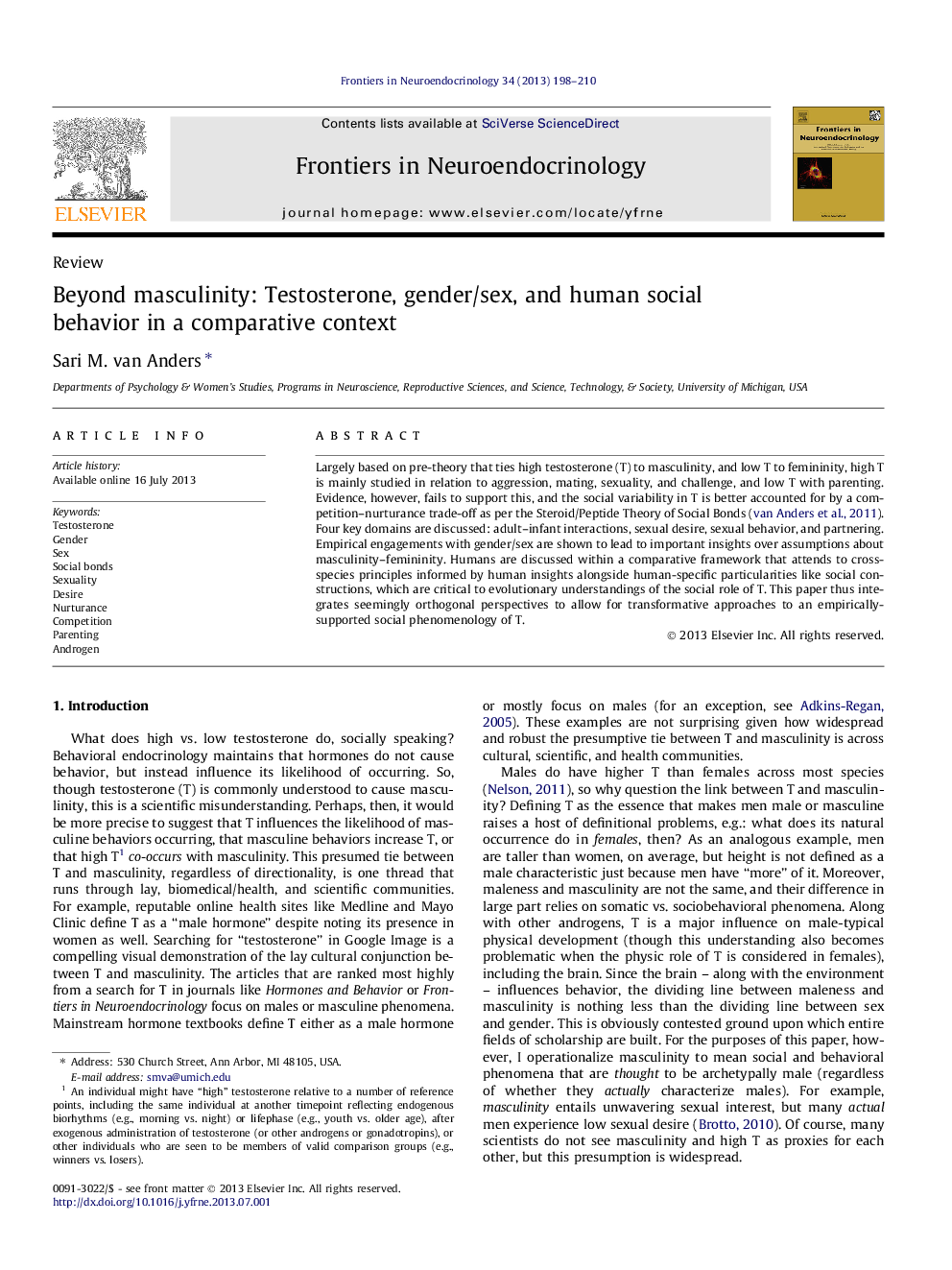| Article ID | Journal | Published Year | Pages | File Type |
|---|---|---|---|---|
| 2799338 | Frontiers in Neuroendocrinology | 2013 | 13 Pages |
•Masculinity–femininity does not underlie testosterone (T) trade-offs.•Competition–nurturance is a parsimonious trade-off for high/low T.•Social constructions are critical to evolutionary research on T in humans.•Gender/sex is important to study as one variable among many for T.
Largely based on pre-theory that ties high testosterone (T) to masculinity, and low T to femininity, high T is mainly studied in relation to aggression, mating, sexuality, and challenge, and low T with parenting. Evidence, however, fails to support this, and the social variability in T is better accounted for by a competition–nurturance trade-off as per the Steroid/Peptide Theory of Social Bonds (van Anders et al., 2011). Four key domains are discussed: adult–infant interactions, sexual desire, sexual behavior, and partnering. Empirical engagements with gender/sex are shown to lead to important insights over assumptions about masculinity–femininity. Humans are discussed within a comparative framework that attends to cross-species principles informed by human insights alongside human-specific particularities like social constructions, which are critical to evolutionary understandings of the social role of T. This paper thus integrates seemingly orthogonal perspectives to allow for transformative approaches to an empirically-supported social phenomenology of T.
Graphical abstractFigure optionsDownload full-size imageDownload as PowerPoint slide
